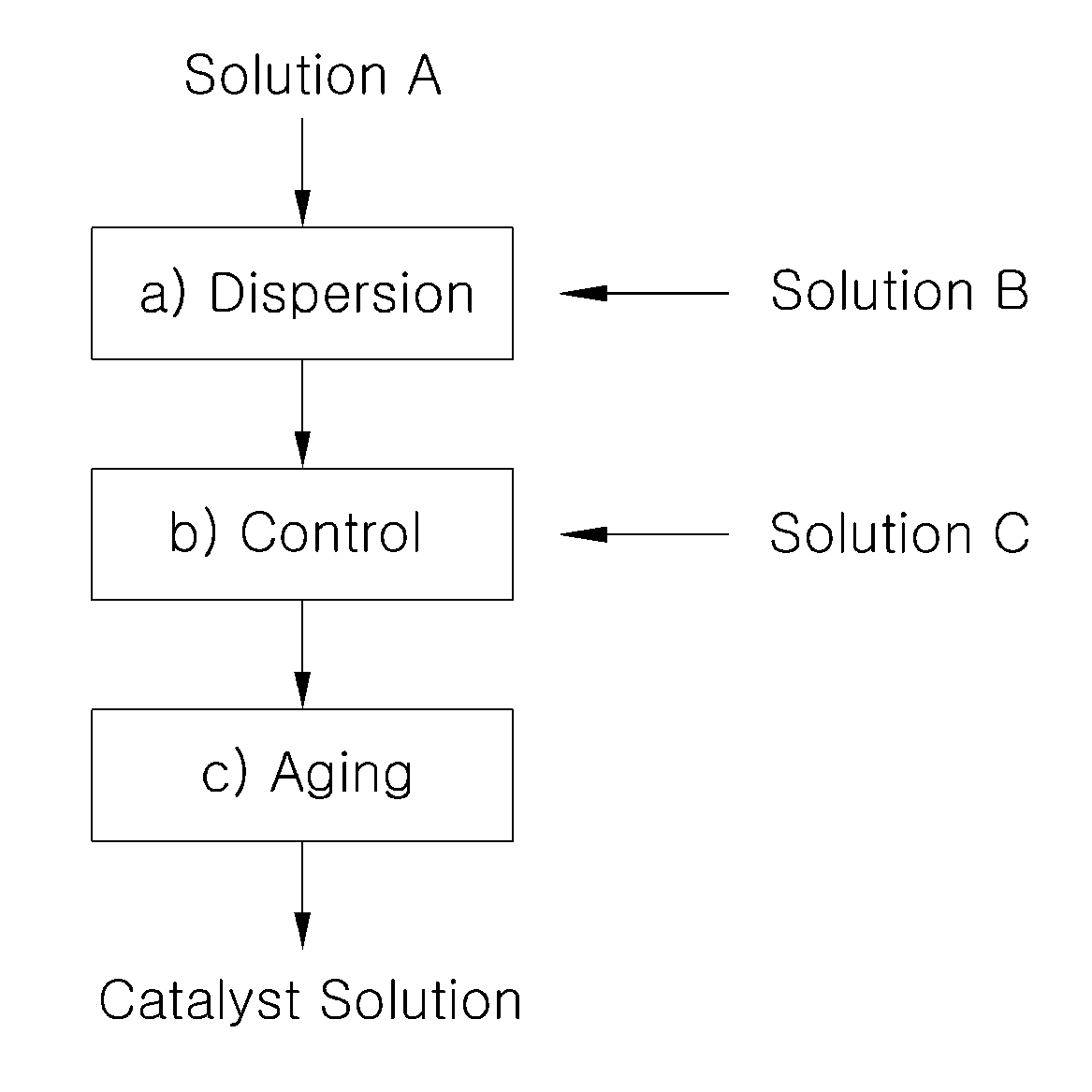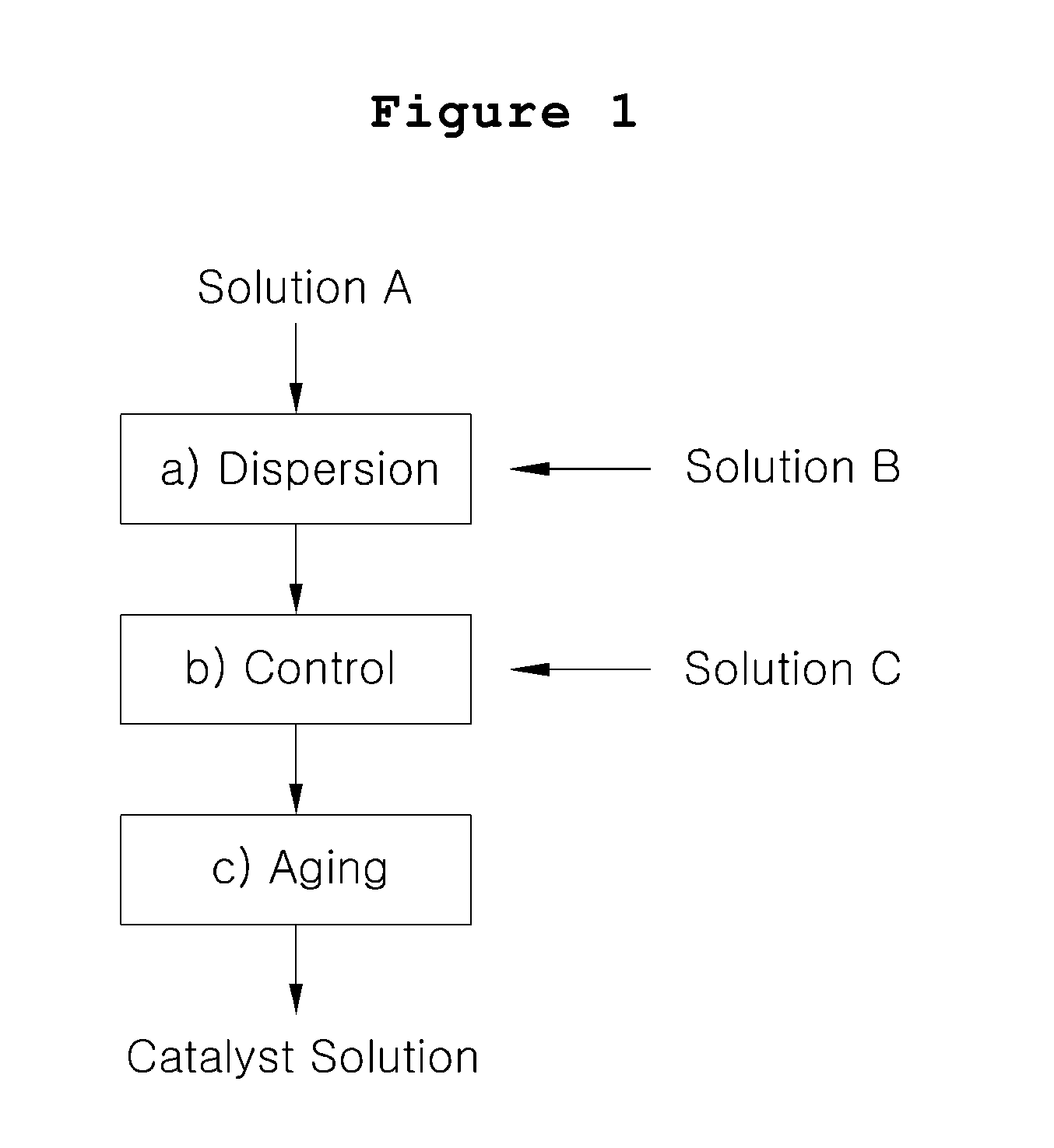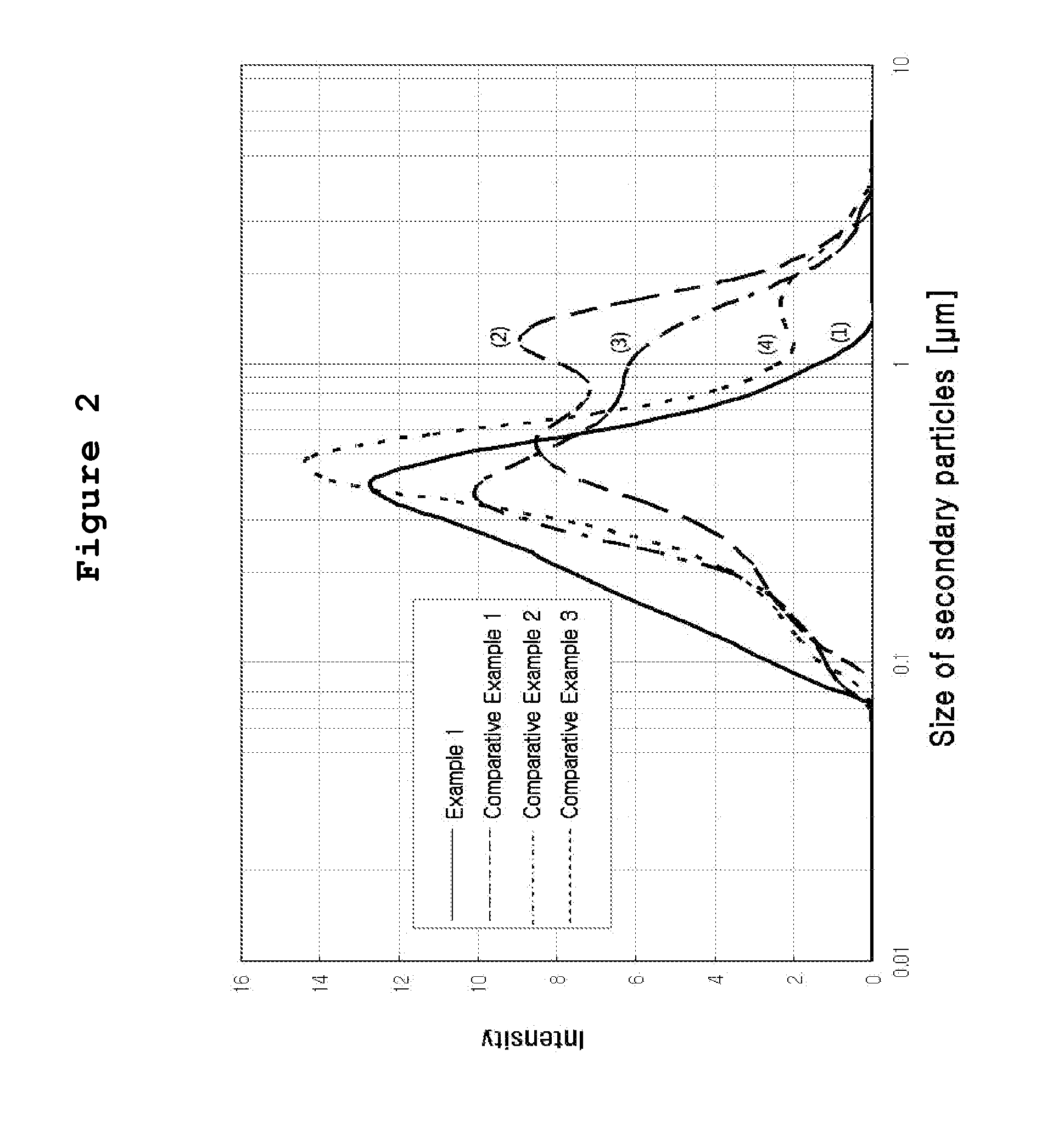Process for preparing of a catalyst solution for fuel cell and a membrane electrode assembly using the same
a technology of membrane electrodes and catalyst solutions, which is applied in the direction of fuel cells, cell components, electrical equipment, etc., can solve the problems of difficult to apply a small amount of ink, difficult to obtain homogeneous catalyst layers, and difficult to substantially develop electrochemical performan
- Summary
- Abstract
- Description
- Claims
- Application Information
AI Technical Summary
Benefits of technology
Problems solved by technology
Method used
Image
Examples
example 1
[0042]Platinum catalyst carried on carbon particles (TEC10V50E, manufactured by Tanaka Kabushiki Kaisha, 50% by weight Pt / C) (5.3 g) was mixed with water (25 g), and the mixture was stirred in an agitation barrel to prepare Solution A.
[0043]Separately, isopropyl alcohol (21 g) as low boiling point solvent was mixed with ion conductive resin solution containing 5% by weight of Nafion (Nafion solution DE512 manufactured by Du Pont) (31.6 g), and the mixture was stirred to prepare Solution B.
[0044]Solution B was incorporated to Solution A under stirring, and the mixture was dispersed by using an airtight homogenizer for 1 hour. Then, Solution C comprising water (6.6 g) and ethylene glycol (10.6 g) as high boiling point solvent mixed therein was added thereto. The resultant mixture was stirred for 10 hours to prepare catalyst slurry.
[0045]The catalyst slurry thus prepared was aged at the temperature lower than 5° C. for 24 hours, and coarse particles were removed by using a polymer memb...
PUM
| Property | Measurement | Unit |
|---|---|---|
| temperature | aaaaa | aaaaa |
| mediate size | aaaaa | aaaaa |
| particle size | aaaaa | aaaaa |
Abstract
Description
Claims
Application Information
 Login to view more
Login to view more - R&D Engineer
- R&D Manager
- IP Professional
- Industry Leading Data Capabilities
- Powerful AI technology
- Patent DNA Extraction
Browse by: Latest US Patents, China's latest patents, Technical Efficacy Thesaurus, Application Domain, Technology Topic.
© 2024 PatSnap. All rights reserved.Legal|Privacy policy|Modern Slavery Act Transparency Statement|Sitemap



